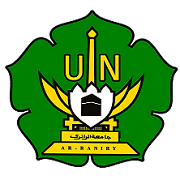THE INFLUENCE OF COMMUNICATION IN CREATING HOUSEHOLD HARMONY IN ACEH BARAT DISTRICT
Abstract
Keywords
Full Text:
PDFReferences
Achmad, A.S. 1990. Manusia dan Informasi [Humans and Information]. Ujung Pandang: Hasanuddin University Press.
Al-Bani, M. 2009. Agar Pernikahan Seindah Impian [So That Marriage is as Beautiful as a Dream]. Solo: Media Kiswah.
Ali, Z. 2007. Hukum Perdata Islam di Indonesia [Islamic Civil Law in Indonesia]. Jakarta: Sinar Grafika.
Arikunto, S. 2002. Prosedur Penelitian Suatu Pendekatan Praktek [Research Procedures: A Practical Approach]. Yogyakarta: Rineka.
Asrizal. 2015. Kafaah [Kafaah]. Yogyakarta: Lembaga Ladang Kata.
Budianto, H. 2011. Ilmu Komunikasi Sekarang dan Tantangan Masa Depan [Communication Science Now and Future Challenges]. Jakarta: Kencana.
Cangara, H. 2000. Pengantar Ilmu Komunikasi [Introduction to Communication Science]. Jakarta: PT. Raja Grafindo Persada.
Gunarsa, S.D. 2002. Psikologi Praktis; Anak, Remaja dan Keluarga [Practical Psychology: Children, Adolescents, and Families]. Jakarta: PT Gramedia Pustaka Utama.
Heryanto, G.G. 2010. Komunikasi Politik di Era Industri Citra [Political Communication in the Era of Image Industry]. Jakarta: PT Lasswell Visitama.
Humaidi. 2011. Teori Komunikasi dan Strategi Dakwah [Communication Theory and Da'wah Strategy]. Malang: UMM Press.
Hussein, B. 2009. Hadits Shahih Al-Jamiush Shahih Bukhori-Muslim [Sahih Al-Jamiush: Authentic Hadiths of Bukhari-Muslim]. Surabaya: Karya Utama.
Mulyana, D. 2012. Ilmu Komunikasi Suatu Pengantar [Communication Science: An Introduction]. Jakarta: Rosdakarya.
Mushoffah, A. 2001. Untaian Mutiara Buat Keluarga [Pearls for the Family]. Jakarta: Pustaka Belajar.
Nuruddin, A., and Azhari, A. 2004. Hukum Perdata Islam di Indonesia [Islamic Civil Law in Indonesia]. Jakarta: Prenada Media.
Partanto, P.A., et al. 1994. Kamus Ilmiah Populer [Popular Scientific Dictionary]. Surabaya: Arkola.
Poerdarminta, W.J.S. 1982. Kamus Umum Bahasa Indonesia [General Indonesian Dictionary]. 2nd ed. Jakarta: Balai Pustaka.
Rosyada, D. 2020. Penelitian Kualitatif Untuk Ilmu Pendidikan [Qualitative Research for Educational Science]. Jakarta: Kencana.
Sarosa, S. 2021. Analisis Data Penelitian Kualitatif [Qualitative Research Data Analysis]. Yogyakarta: PT Kanisius.
Soraya, E. 2015. Hubungan Antara Religiusitas dengan Tingkat Keharmonisan Keluarga pada Pasangan Suami Istri [The Relationship Between Religiosity and the Level of Family Harmony in Married Couples]. Surakarta: Universitas Muhammadiyah Surakarta.
Supriptik, A. 1995. Komunikasi antara Pribadi Tinjauan Psikologis [Interpersonal Communication: A Psychological Perspective]. Jogjakarta: Kanisius.
Winarni, W.W. 2018. Teori dan Praktik Penelitian Kuantitatif: Penelitian Tindakan Kelas (PTK) Research and Development (R&D) [Theory and Practice of Quantitative Research: Classroom Action Research (CAR) and Research and Development (R&D)]. Jakarta: Bumi Aksara.
Yasin et al. 2023. Faktor-Faktor Yang Mempengaruhi Keharmonisan Rumah Tangga Muslim di Jawa Tengah [Factors Affecting the Harmony of Muslim Households in Central Java]. ADHKI: Journal Of Islamic Family Law, 5(1), 17-30.
DOI: http://dx.doi.org/10.22373/al-ijtimaiyyah.v10i1.24154
Refbacks
- There are currently no refbacks.
Copyright (c) 2024 Baharuddin AR, Nurainiah

This work is licensed under a Creative Commons Attribution-ShareAlike 4.0 International License.
Jurnal Al-Ijtimaiyyah has been indexed by:



















